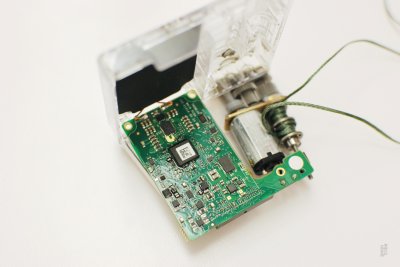What I particularly like about the Van de Graaff (or VDG) is that it’s a combination of a few discrete scientific principles and some mechanically produced current, making it an interesting study. For example, did you know that its voltage is limited mostly by the diameter and curvature of the dome? That’s why a handheld one is harmless but you want to avoid getting zapped by one with a 15″ diameter dome. What follows is a journey through the workings of this interesting high voltage generator.
Day: February 16, 2017
Does This Demo Remind You Of Mario Kart? It Should!
Here’s a slick-looking VGA demo written in assembly by [Yianni Kostaris]; it’s VGA output from an otherwise stock ATmega2560 at 16MHz with no external chips involved. If you’re getting some Super Mario Kart vibes from how it looks, there’s a good reason for that. The demo implements a form of the Super Nintendo’s Mode 7 graphics, which allowed for a background to be efficiently texture-mapped, rotated, and scaled for a 3D effect. It was used in racing games (such as Super Mario Kart) but also in many others. A video of the demo is embedded below.
[Yianni] posted the original demo a year earlier, but just recently added detailed technical information on how it was all accomplished. The AVR outputs VGA signals directly, resulting in 100×120 resolution with 256 colors, zipping along at 60 fps. The AVR itself is not modified or overclocked in any way — it runs at an entirely normal 16MHz and spends 93% of its time handling interrupts. Despite sharing details for how this is done, [Yianni] hasn’t released any code, but told us this demo is an offshoot from another project that is still in progress. It’s worth staying tuned because it’s clear [Yianni] knows his stuff.
Continue reading “Does This Demo Remind You Of Mario Kart? It Should!”
Teardown Of Nike Self-Lacing Shoes
There used to be a time, before running shoes had blinking LEDs and required placing on an inductive charger overnight, when we weren’t worried about whether or not we could dump the firmware running underneath our heels. Those are not the times that we’re living in. Nike came out with a shoe that solves the age-old problem of lacing: the HyperAdapt. And [Telind Bench] has torn them apart.
 Honestly, we’re kinda “meh” about what’s inside. The “laces” are actually tubes with a small Kevlar-like cable running inside, and the whole thing torques up using a small, geared DC motor. That’s kinda cool. (We have real doubts about [Telind]’s guess of 36,000 RPM for the motor speed.) But in an age when Amazon gives away small WiFi-enabled devices for a few bucks as a loss-leader to get you to order a particular brand of laundry detergent, we’re not so dazzled by the technology here, especially not at the price of $720 for a pair of freaking shoes.
Honestly, we’re kinda “meh” about what’s inside. The “laces” are actually tubes with a small Kevlar-like cable running inside, and the whole thing torques up using a small, geared DC motor. That’s kinda cool. (We have real doubts about [Telind]’s guess of 36,000 RPM for the motor speed.) But in an age when Amazon gives away small WiFi-enabled devices for a few bucks as a loss-leader to get you to order a particular brand of laundry detergent, we’re not so dazzled by the technology here, especially not at the price of $720 for a pair of freaking shoes.
The only really interesting bit is the microcontroller, which is over-powered for the job of turning a wheel when a keyboard-style sensor is pressed by your heel. What is Nike thinking? We want to see the firmware, and we’d like it reverse engineered. What other chips are on board? Surely, they’ve got an accelerometer and are measuring your steps, probably tying in with an exercise app or something. Does anyone have more (technical) detail about these things? Want to make a name for yourself with a little stunt hacking?














